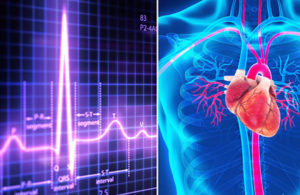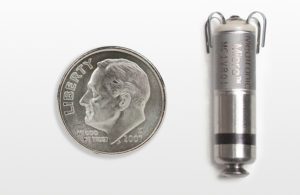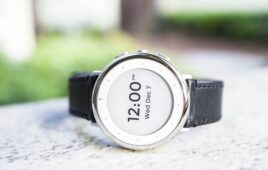
[Image courtesy of FDA]
Here’s the list, along with the FDA’s descriptions:
1. Automated external defibrillators (AEDs)
“Portable and automatic, these devices are often found in public places and can save lives. They can help restore normal heart rhythm in patients whose hearts suddenly and unexpectedly stop pumping blood, an event called cardiac arrest. AEDs analyze heart rhythm and can help rescuers determine whether a shock is needed to restore a normal heartbeat. These devices are not difficult to use, but training in the use of AEDs is highly recommended. Learn more about AEDs on the FDA’s website.”
2. Cardiac ablation catheters
“Long, thin flexible tubes that are threaded into or onto the heart, cardiac ablation catheters treat abnormally rapid heartbeats. They work by modifying small areas of heart tissue that are causing abnormal heart rhythms.”
3. Cardiovascular angioplasty devices
“These are long, thin, flexible tubes that are threaded into a heart or other blood vessel to open narrowed or blocked areas. They are intended to improve blood flow to the heart, reduce chest pain, and treat heart attacks.”

Medtronic’s Micra leadless pacing system [Image courtesy of Medtronic]
4. Cardiac pacemakers
“Small and battery-powered, pacemakers are implanted into the body. Used when the heart beats too slowly, they monitor the organ’s electrical impulses and, when needed, deliver electrical stimulation to make it beat at a more appropriate rate.”
5. Implantable cardioverter defibrillators (ICDs)
“These devices monitor heart rhythms and deliver shocks if dangerously fast rhythms are detected. Many record the heart’s electrical patterns when certain abnormal rhythms occur, allowing doctors to review the patterns.”

Edwards Lifesciences’ Sapien 3 Ultra TAVR [Image courtesy of Edwards Lifesciences]
6. Prosthetic (artificial) heart valves
“Used for replacing diseased or dysfunctional heart valves, which direct blood flow through the heart, these are available in two forms. Mechanical valves are made of man-made materials. The second type, called ‘bioprosthetic’ valves, are made from tissue taken from animals or human cadavers.”
7. Stents
“Small, lattice-shaped, metal tubes that are inserted permanently into an artery, stents are intended to help improve blood flow. Some contain drugs that may reduce the chance that arteries will become blocked again.”
8. Ventricular assist devices (VADs)
“Mechanical pumps that are intended to help weak hearts pump blood effectively, VADs were originally approved for short-term use until donor hearts became available. Some are now approved for long-term therapy in patients with severe heart failure who are not candidates for heart transplants.”




